
Driven by the dual carbon goals, ESG responsible investment is becoming a mainstream practice in the market, with various types of broad ESG investment products emerging and experiencing explosive growth in scale. According to the China SIF Annual Report 2021 published by SynTao Green Finance, by the end of October 2021, the number of broad ESG public fund products in China reached 344, with more than twice the volume of 2020, reaching over 540 billion RMB. The 9th China SIF Annual Conference set up a parallel forum on "ESG product innovation under the carbon neutrality target", where representatives from domestic financial institutions had a lively discussion on this topic.
Mr. Yang Yuebin, Fund Manager of Equity Investment in AXA SPDB Asset Managers, talked about the need for organic integration of value investment and ESG in the context of carbon neutrality. According to Yang, it has become the common mission of mankind to address the crisis brought about by climate change, and carbon neutrality is a solemn commitment made by China as a responsible and major country, which provides clear guidelines for the development of renewable energy such as wind power and photovoltaic. He went on to point out that the value of a company is determined by the discounted free cash flow over its entire life cycle, and that carbon neutrality involves incremental investment requirements of up to 100 billion RMB, providing a new and meaningful perspective for investors to re-examine the whole life-cycle cash flow of a company. Mr. Yang concluded his presentation by introducing the investment methodology of AXA SPDB which organically combines value investment and ESG investment to pursue the maximum intersection of corporate business value and social value. On some of the challenges facing ESG investment in China, Mr. Yang said that the infrastructure required for ESG investment development needs to be continuously improved and that ESG investment in China needs to focus on processing more localized data.
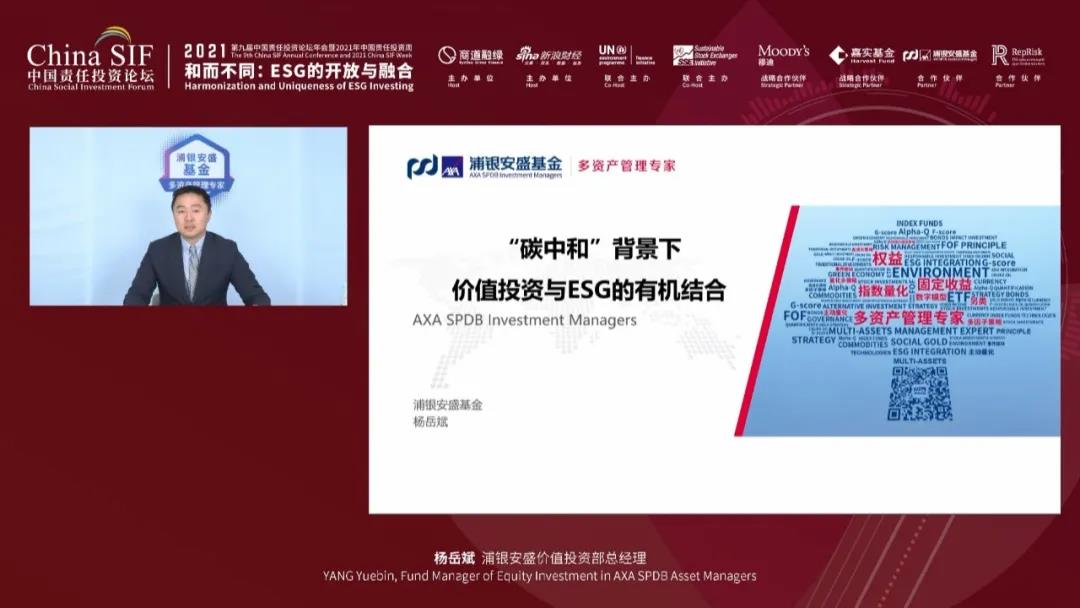
Based on the practice of Industrial Bank, Ms. Chen Yaqin, Division Chief of Green Finance Department, Head Office of Industrial Bank, shared the experience of commercial banks in exploring the development of ESG product system. Firstly, she analyzed the current situation of product application of the existing ESG system from two perspectives: equity and fixed income investment. She went on to discuss that although the Chinese ESG system started relatively late compared to its international peers, China has made very rapid progress in terms of both participation in international responsible principles such as PRB and PRI, as well as specific market practices and product innovation. At present, ESG products on the market are mainly ESG indices and funds and ESG financial products of banks. Finally, Ms. Chen talked about the ESG practices of her institution. The "ESG Beautiful China Series Financial Products" released by the bank's wealth management subsidiary last year were well received by the market, and this year they will focus more on the pan-green sector and give key attention to companies with outstanding performance in E, S and G.
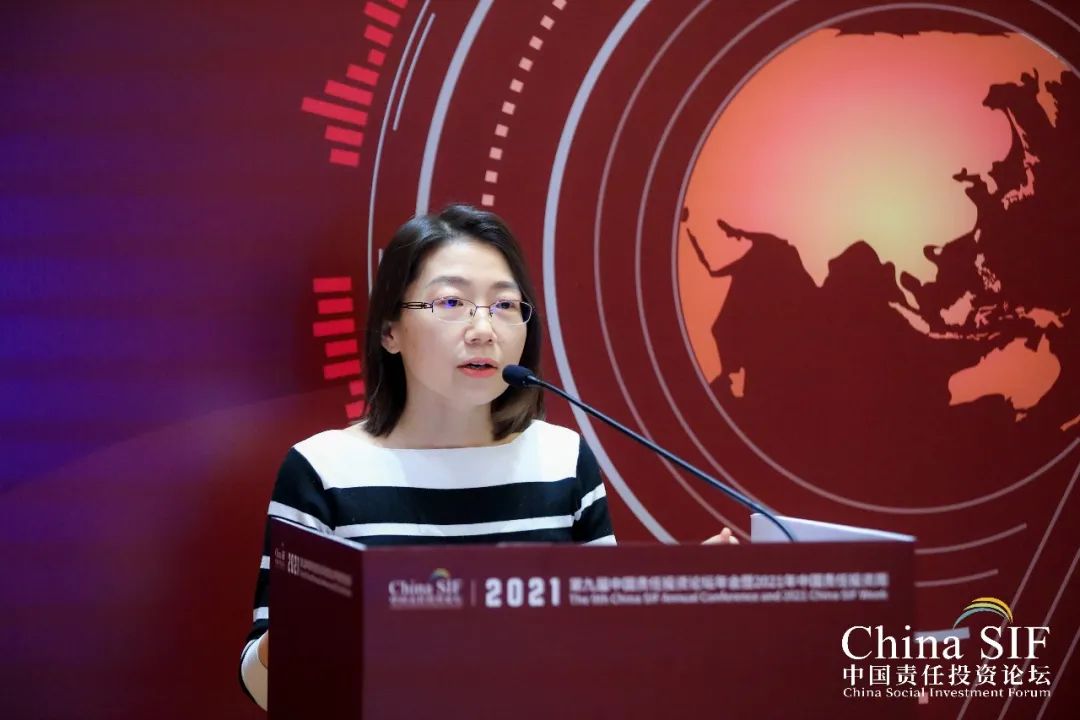
In the panel discussion, chaired by Zhang Rui, Managing Director of SynTao Green Finance, five representative guests discussed the latest trends in the financial market in terms of carbon neutrality, how to incorporate climate change and carbon neutrality dimensions in investment analysis, and the potential challenges in the field of carbon neutrality and ESG development.
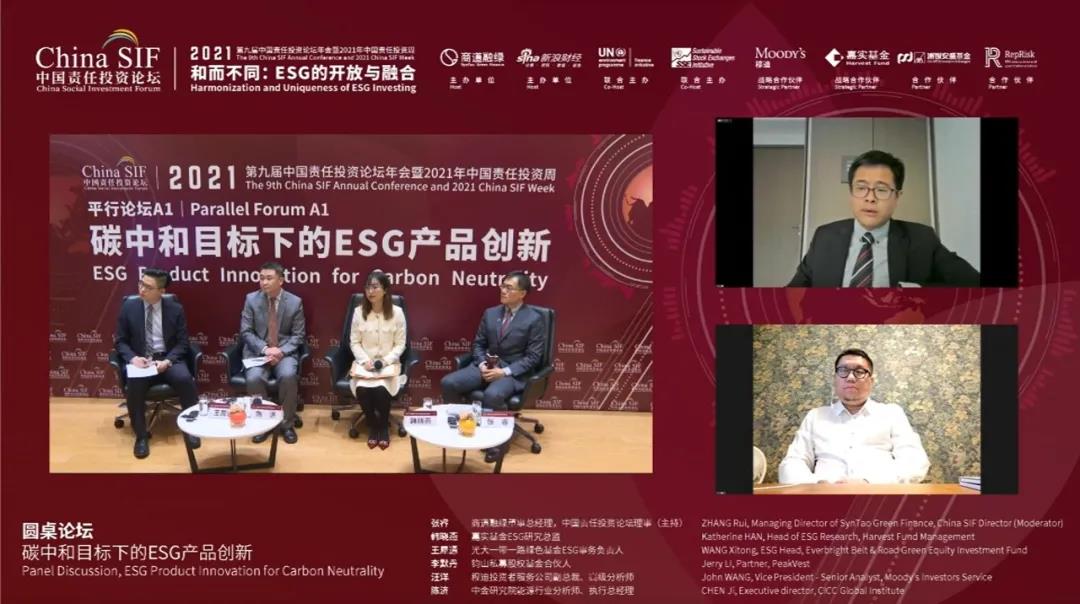
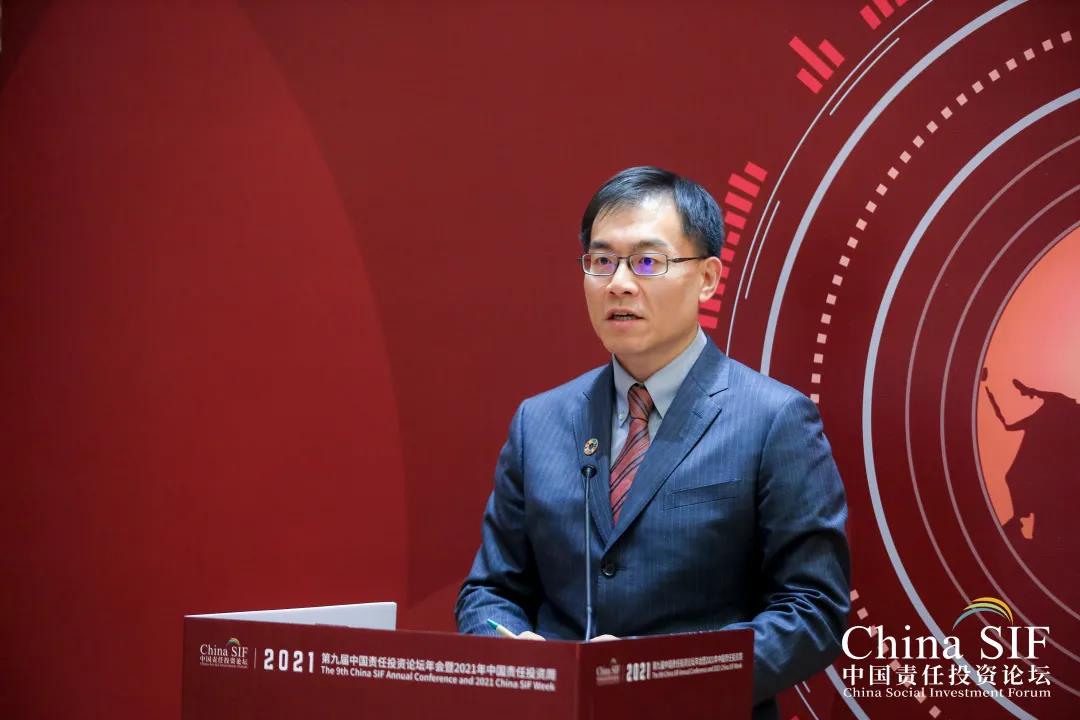
In a discussion on the latest trends in addressing climate change and carbon neutral policies, Mr. Chen Ji, Executive director of the CICC Global Institute, said that the key word for domestic and international policy trends in addressing climate change is mainstreaming, as reflected in the establishment of China's "1+N" policy system to address the dual carbon goals.
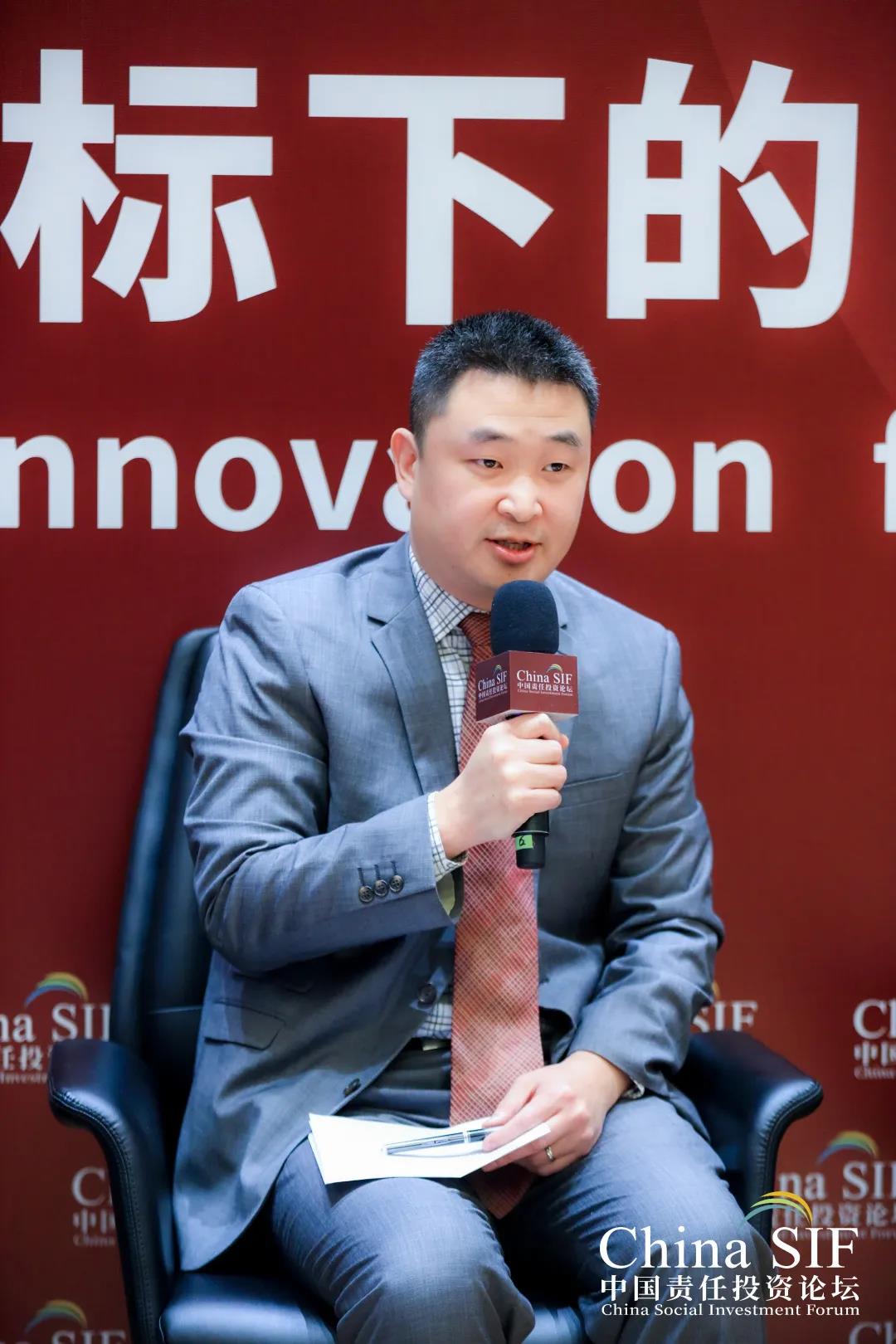
Mr. John Wang, Vice President and Senior Analyst of Moody's Investors Service, introduced the "Glasgow Financial Alliance for Net Zero" (GFANZ), which was established at the COP26 conference.
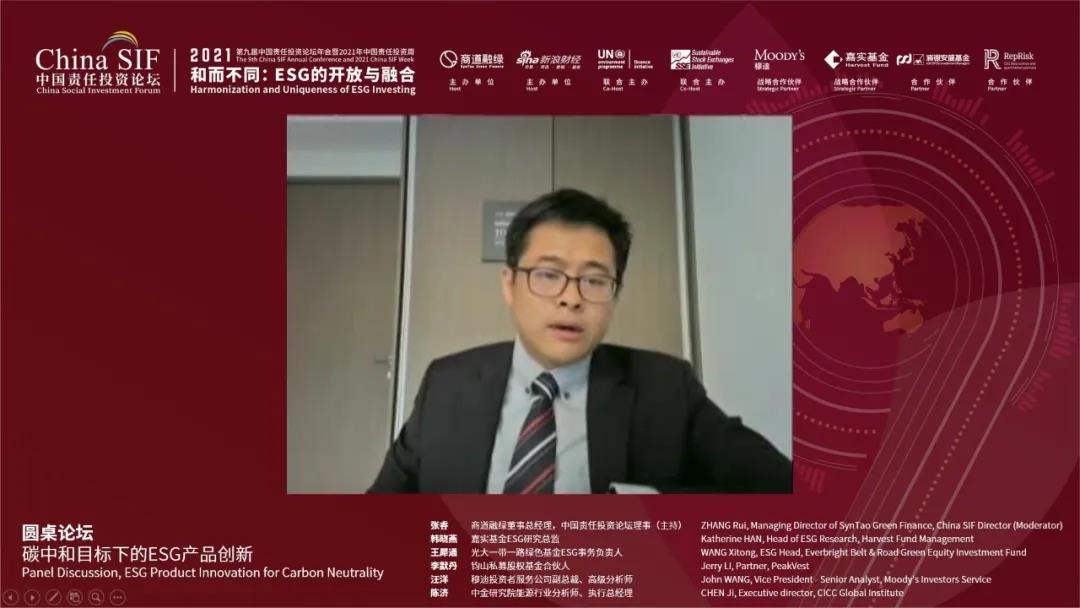
As for product innovation in public funds, Ms. Katherine Han, Head of ESG Research at Harvest Fund Management, said that under the promotion of the dual carbon goals and the rapid implementation of policies, public fund products with ESG-related themes have experienced explosive growth in scale.
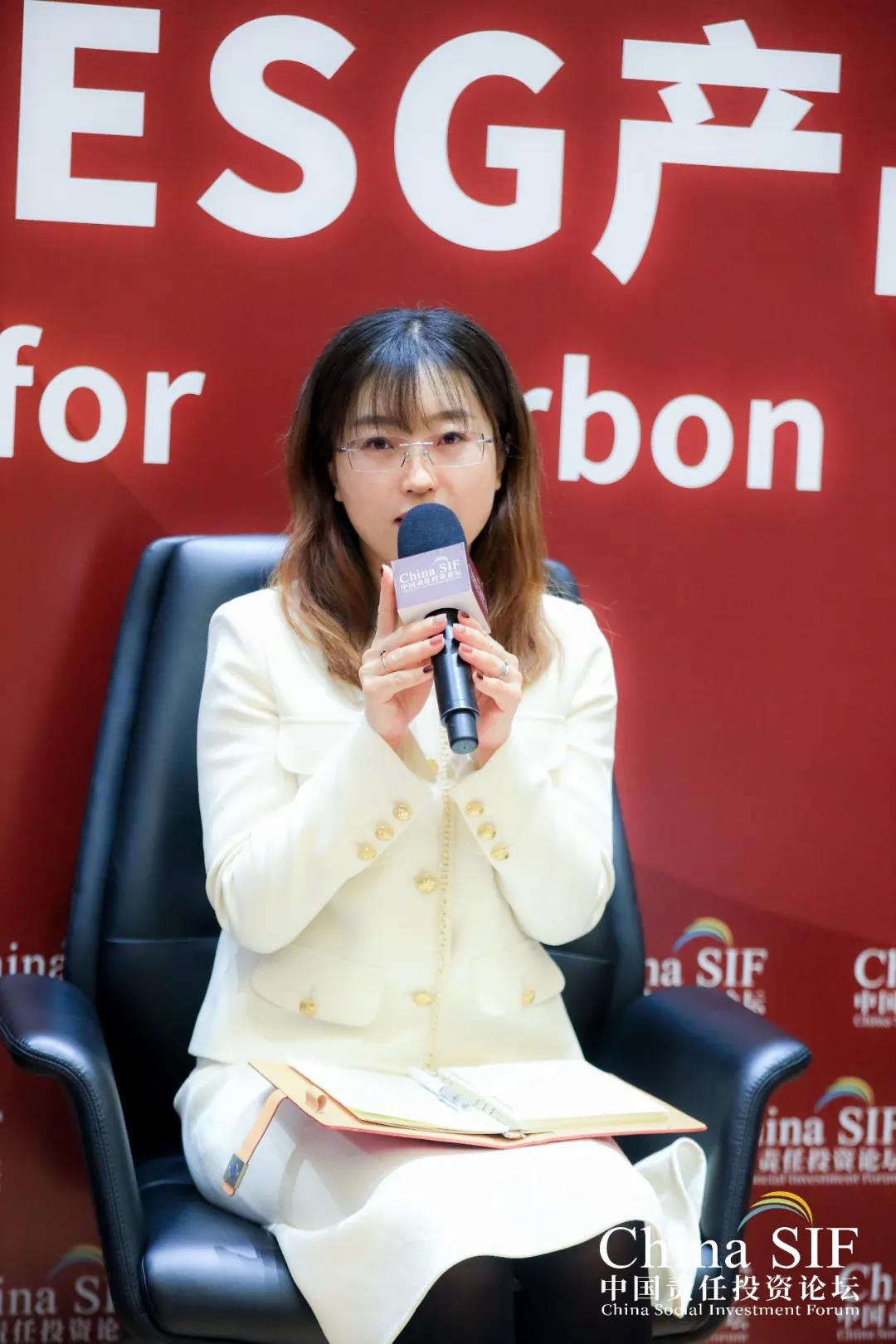
Mr. Wang Xitong, Head of ESG of Everbright Belt & Road Green Equity Investment Fund, shared his views on the investment areas that Everbright is bullish on in the green sector, believing that investments in new energy and information-assisted technologies can be increased from the energy production side, energy utilization side and auxiliary support side.
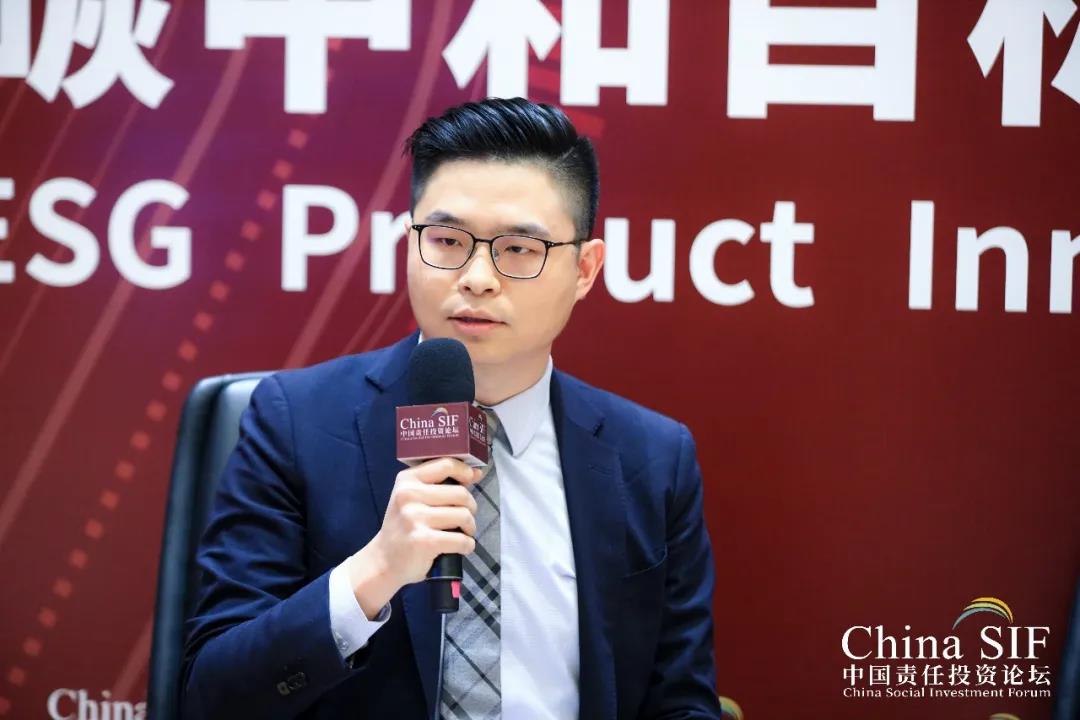
From the perspective of a master fund, Mr. Jerry Li, Partner of PeakVest, said there are three main areas of ESG-related opportunities in the future: Reduce, Reuse and Recycle.
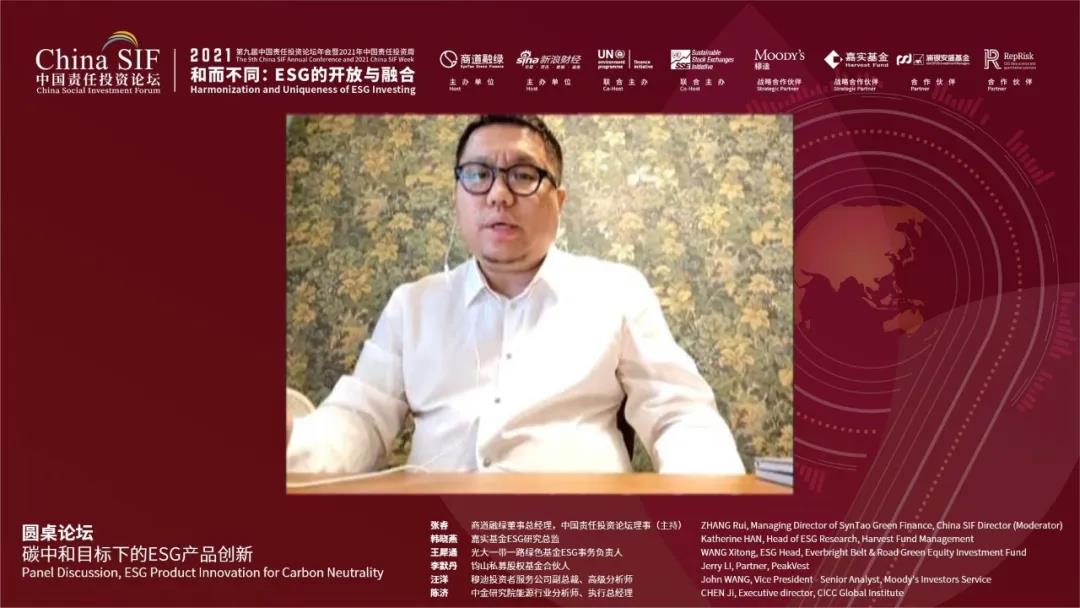
The participants then discussed how to incorporate climate change and carbon neutrality dimensions into the investment research system. Katherine Han said that in the process of building its ESG evaluation system, Harvest Fund has realized that carbon neutrality and climate change are long-term projects for the whole economy and society in the future, involving various sectors and processes, so for the investment side, it needs to systematically incorporate the impact of climate change in its long-term asset allocation framework. For his part, John Wang argued that the prerequisite for ESG product innovation also requires a solid infrastructure, i.e., how to make a comparable, verifiable, transparent and quantitative assessment of climate risk. He shared Moody's recently developed CTA, a tool for quantitative assessment of climate change risks and opportunities, to help investors better integrate the corresponding risks into their overall investment decisions.
In the final round of discussion on the possible challenges of ESG and carbon neutrality, Katherine Han suggested that there are three major pressing challenges, namely the establishment of a standard system, how to balance short-term investment objectives and long-term climate change factors and to promote ESG and climate change-related concepts to short-term interest favored groups such as individual investors, as well as the issue of basic education and talent pool to be improved. According to Chen Ji, it is difficult to achieve a smooth transition in the carbon-intensive traditional industry, both on the consumer and supply side. In addition, it is even more difficult to develop transition finance products to help reduce and eliminate the green premium in order to better achieve a fair transition.
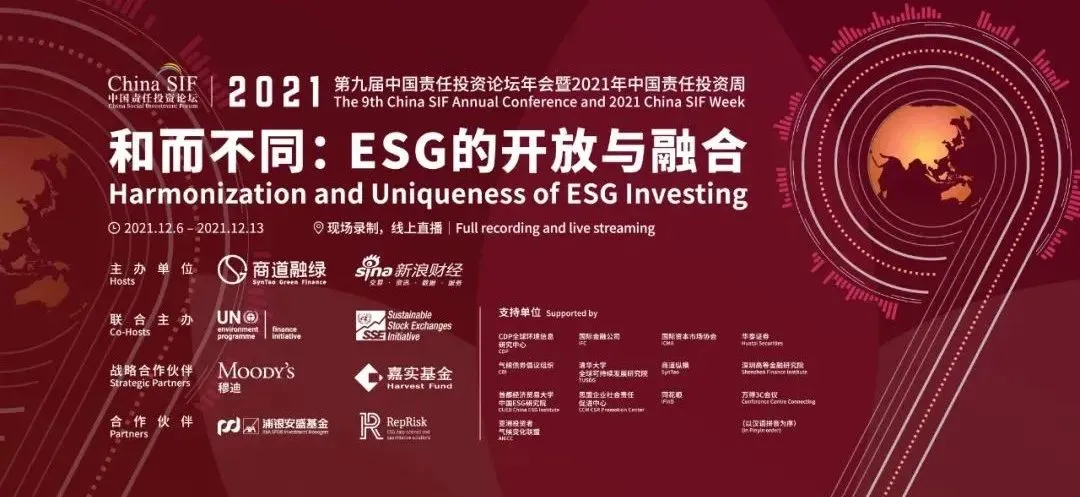
The 9th China SIF Annual Conference
Dec. 7th 2021 Beijing 08:45-17:30
Theme: Harmonization and Uniqueness of ESG Investing
Hosts: SynTao Green Finance, Sina Finance
Co-Hosts: United Nations Environment Programme Finance Initiative (UNEP FI), United Nations Sustainable Stock Exchange Initiative (UN SSEi)
Strategic Partners: Moody's, Harvest Fund
Partners: AXA SPDB Investment Managers, RepRisk
Supporters: CDP, IFC, ICMA, Huatai Securities, CBI, TUSDG, SynTao, Shenzhen Finance Institute, CUEB China ESG Institute, CCM CSR Promotion Center, iFinD, Conference Centre Connecting, AIGCC, UK PACT
(in PINYIN order)

|
|